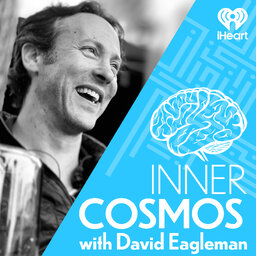Ep12 "Can we create new senses for humans?"
Can a blind person come to see through her tongue? What would it be like to smell with the nose of a dog? How can we perceive streams of information that are normally invisible to us? And what does any of this have to do with pilots or Westworld or tinnitus or friendly fire or a wristband with vibratory motors? We don't detect most of the action going on in the world around us... and today we'll explore how technology might change that.
 Inner Cosmos with David Eagleman
Inner Cosmos with David Eagleman


